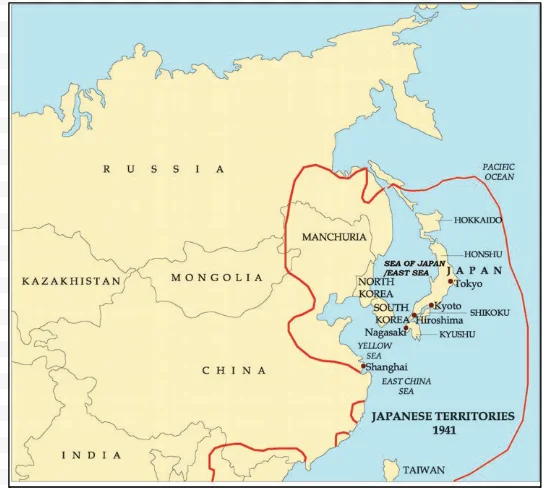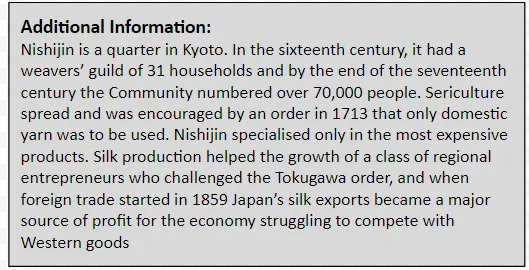![]() 15 Jul 2024
15 Jul 2024
At the beginning of the 19th century, East Asia was primarily characterized by China’s dominance under the Qing dynasty, while Japan remained relatively isolated. However, within a few decades, China faced political turmoil and was unable to effectively respond to the colonial challenge. In contrast, Japan successfully transformed into a modern nation-state.
Japan’s Rise to Power: Japan established an industrial economy, and expanded its territorial influence by incorporating Taiwan (1895) and Korea (1910).

In Japan, a significant transformation took place during the feudal era, laying the foundation for future development. Let us understand these factors in detail.
Swords and Serenity: The peasantry was disarmed, allowing only samurai to carry swords, leading to a period of peace and order after frequent wars in the previous century.
Flourishing Capitals: As daimyo’s capitals expanded, Japan boasted populous cities, including Edo, Osaka, and Kyoto.

Wealth and Trade: Japan was seen as wealthy due to its import of luxury goods such as silk from China and textiles from India.

Social and Intellectual Shifts: Social and intellectual changes encouraged a reevaluation of Chinese influence and the essence of being Japanese could be found long before the contact with China

| Must Read | |
| Current Affairs | Editorial Analysis |
| Upsc Notes | Upsc Blogs |
| NCERT Notes | Free Main Answer Writing |
The modernization of China and Japan underscores the adaptability and resilience of these nations. While China underwent economic reforms and a revolutionary movement, Japan‘s rise through industrialization and post-war reconstruction illustrates diverse strategies of national development amidst Western influence.
| Related Articles | |
| Beginning of Modern Nationalism In India: 19th Century Movements | Territorial Army |
| Industrialization in India | Buddhist Literature |
<div class="new-fform">
</div>
